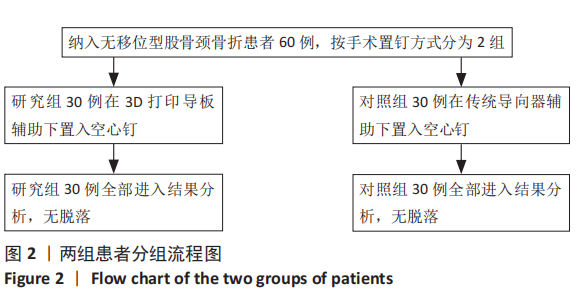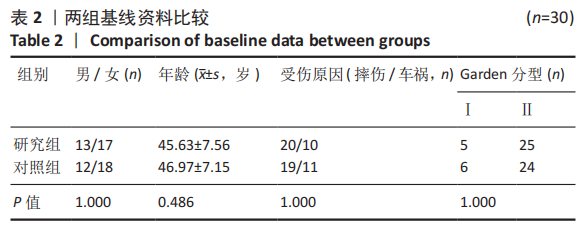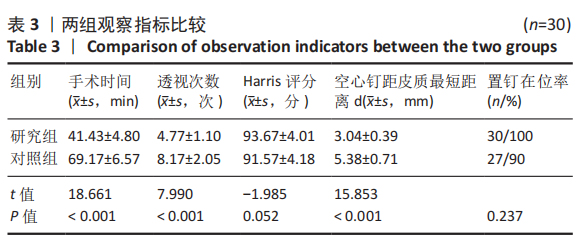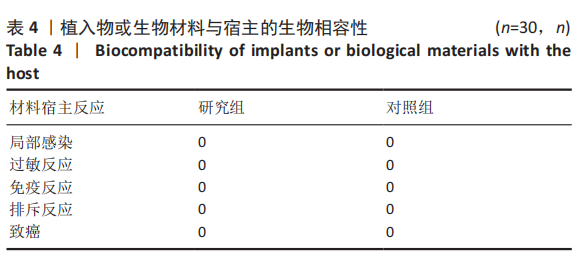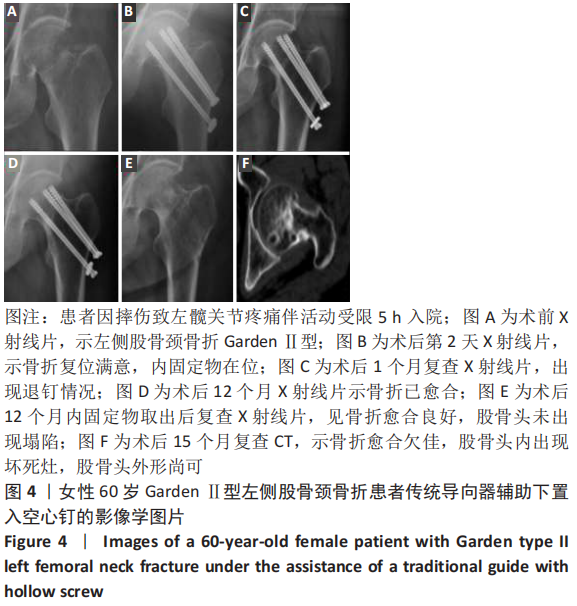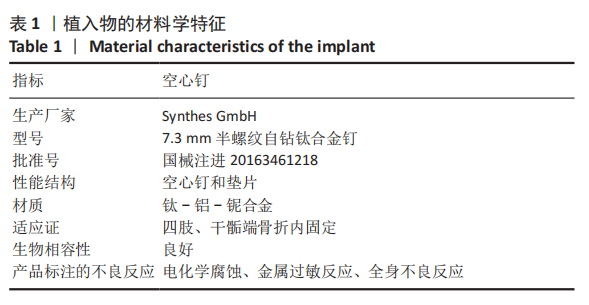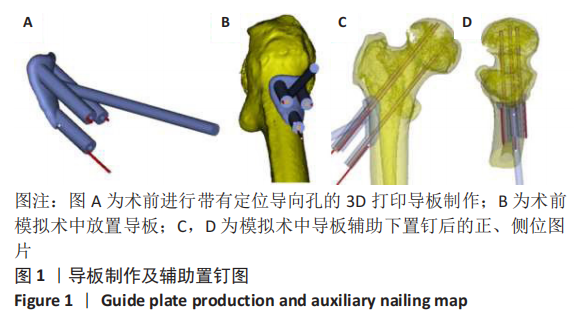中国组织工程研究 ›› 2021, Vol. 25 ›› Issue (36): 5753-5758.doi: 10.12307/2021.337
• 数字化骨科 digital orthopedics • 上一篇 下一篇
3D打印导板辅助置入空心钉治疗无移位型股骨颈骨折的短期评价
王思哲1,高海燕2,蓝孝全3,王 盼3,黄浩然1,王金玉1,马建林1
- 山东第一医科大学附属青岛医院,1脊柱关节外科,2影像科,33D打印医学转化中心,山东省青岛市 266000
A short-term evaluation of three-dimensional printed guide plate assisted hollow screw in the treatment of non-displaced femoral neck fracture
Wang Sizhe1, Gao Haiyan2, Lan Xiaoquan3, Wang Pan3, Huang Haoran1, Wang Jinyu1, Ma Jianlin1
- 1Spine and Joint Surgery, ²Department of Imaging, 33D printing Medical Transformation Center, Qingdao Chengyang People’s Hospital, Shandong First Medical University, Qingdao 266000, Shandong Province, China
摘要:
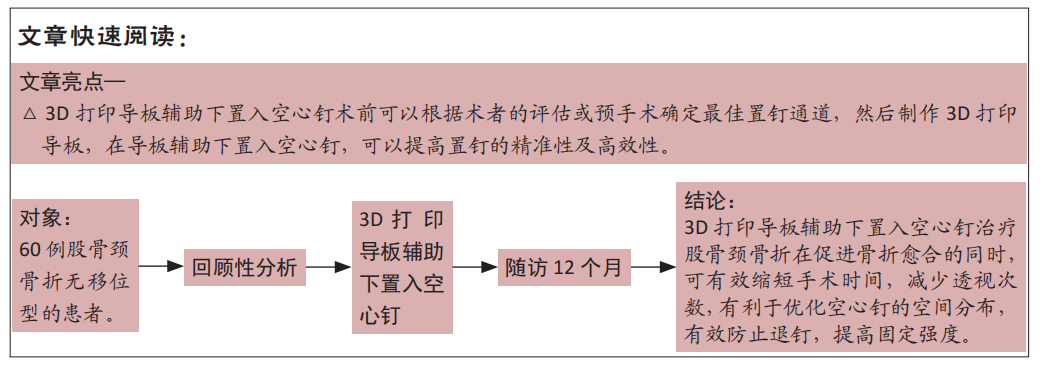
文题释义:
3D打印技术:作为一座连接虚拟与现实的桥梁,是近年来新兴发展和成熟的一种技术,又叫“快速成型技术”。需要进行3D打印的患者术前行CT扫描及三维重建,将扫描数据导入到Mimics软件,通过一些特殊的材料打印成3D模型。
3D打印导板:研究组患者术前均行髋关节CT薄层平扫及三维重建检查,取得DICOM格式数据,随后导入Mimics软件;利用阈值分割去除低密度的肌肉和软组织对骨组织的影响,同时利用蒙板设计去除内部空腔;在Mimics中设计与其相贴合的反向模板。在软件中设计最佳进钉通道,并制作定位导向孔,将定位导向孔制作成空心圆柱体,在圆柱体的侧壁上预留与圆柱体平行的1.0克氏针导向孔,形成带有双侧定位孔的个体化导向模板,将反向模板与最佳进钉通道融合为一体;将做好的数字化导向模板以STL格式文件输入快速成型机,使用新型的生物基及可生物降解材料(聚乳酸),利用光固化成型技术或熔融沉积成型技术将数字化个体导向模板制作出来,从而形成实物。
背景:空心钉治疗股骨颈骨折为临床常见标准术式。借助3D打印制作的个性化手术工具中最为典型的就是手术置钉导板,借助导板的辅助不但可以降低螺钉穿破骨皮质的风险,而且与传统方法相比置钉更精准、高效。
目的:探讨在3D打印导板辅助下置入空心钉治疗无移位型股骨颈骨折的短期临床效果。
方法:回顾性分析2016年10月至2019年10月在山东第一医科大学附属青岛医院诊断为无移位型股骨颈骨折的患者共60例,手术方式均采用空心钉内固定治疗,根据是否采用3D打印分为研究组和对照组,每组30例。研究组采用3D打印导板辅助置钉,对照组采用传统导向器或徒手置钉。术后随访12个月,比较两组手术时间、术中透视次数、髋关节Harris评分、置钉在位率以及3枚空心钉距股骨颈皮质的距离。
结果与结论:①所有入组病例均获得有效随访,均顺利完成手术,未出现血管神经损伤等并发症;②研究组的手术时间明显短于对照组,术中透视次数、空心钉距骨皮质最短距离均优于对照组,组间比较差异有显著性意义(P < 0.05);③研究组的置钉在位率优于对照组,但组间差异无显著性意义(P > 0.05);④两组间术后12个月随访Harris评分比较差异无显著性意义(P > 0.05);⑤结果表明,3D打印导板辅助空心钉治疗无移位型股骨颈骨折在达到良好手术效果的同时,可以节省手术时间,减少术中透视次数,降低失血量,有利于优化空心钉的空间分布,防止退钉并提高固定强度,短期临床效果肯定。
https://orcid.org/0000-0002-2108-2784 (王思哲)
中国组织工程研究杂志出版内容重点:人工关节;骨植入物;脊柱;骨折;内固定;数字化骨科;组织工程
中图分类号:
